Jodrell Bank Observatory
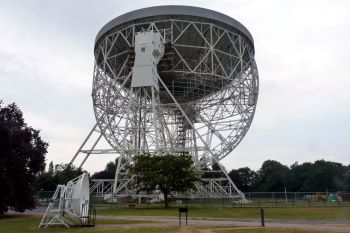
The Jodrell Bank Observatory is one the earliest radio astronomy observatories in the world.
Part of the University of Manchester, it played a prominent role in the evolution of radio astronomy by way of several important technological developments. They include the research of meteors, quasars, pulsars, masers and gravitational lenses, and the tracking of space probes at the start of the Space Age.
Map of Jodrell Bank Observatory
Load mapCommunity Reviews
Thomas Harold Watson
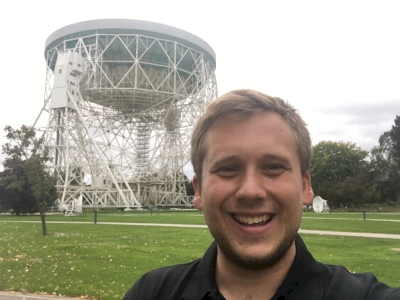
I was impressed and disappointed with this site at the same time. I will start with my negative points and then move onto the nicer stuff afterwards.
You can not go up, on or in the Lovell telescope. I wouldn’t normally “tick” something off my list unless I’ve truly experienced it 100%, but according to the staff there this would never be a possibility as it is still in use, and the only people allowed on it are the people that work on it. I feel that if this is the case they should have picked a different observatory that allows visitors, even if it meant charging a lot and pre-booking well in advance.
Now on the subject of charging lots, I had to pay £4 for the parking. I was only at the site for 1 hour, meaning this cost more than many cities charge, not to mention I had to pay my fare ontop of that. The site is in the middle of the countryside and the “gardens” are not yet compete, so until there is more to do/see there I strongly believe that there should be only one charge, the entrance one.
On a lighter note though the telescope looked amazing, I had never seen anything like it in my 24 years of being alive and the whispering satellite dishes were also remarkable (I have since been to multiple cathedrals with whispering galleries, but this was my first experience with anything like it). I am unsure if this site deserved WHS statues yet without having all their work completed, but hopefully they will keep adding interesting things to do, see and teach, so even if people can’t go up the magnificent observatory, they’ll be able to keep entertained in other ways.
Read more from Thomas Harold Watson here.
Daniel C-Hazard
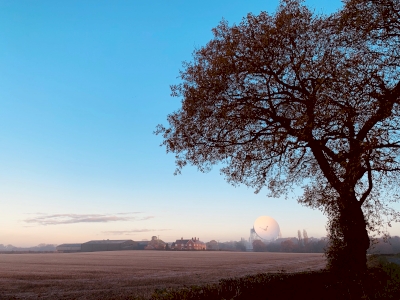
I think this site deserves its world heritage status and it surely fills a WHS niche. It is not the oldest radio telescope in the world but one of the oldest "bigger ones" as far as I could find out. Personally, I find the Arecibo Observatory in Puerto Rico, which is four times bigger in diameter (and six years younger), more impressive. A cross-national nomination would have made sense in my opinion (well played, UK!).
What I did not like so much was the fact that the site's management has made the WH listed smaller Mark II Telescope completely off limits to the public. I understand that astrophysics research is still carried out by the University of Manchester but allowing visitors a closer look and operating such a site would not exclude each other. Nowadays, to have a closer look on the Lovell Telescope, the main one, the visitor has to pay at least 7.65 GBP entrance fee for an adult, plus 4.00 GBP for a parking ticket. These fees give you access to the Lovell Telescope site (protected by a circular fence), a rather boring exhibition in the so-called "Space Pavilion" (the "Star Pavilion" was closed at the time of my visit in November 2019) and the Jodrell Bank Gardens, which were undergoing refurbishment and were partly closed for that. Overall, I found the site overpriced. And to be honest, I took the better pictures from outside the aforementioned area.
That said, staff at the Jodrell Bank Discovery Centre were friendly, and I would still recommend the visit to anyone interested in space, science, and to all WH enthusiasts.
Clyde
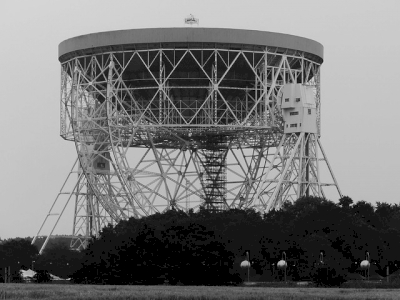
I visited this WHS in July 2019. The only days I could visit happened to be days when regular access is not allowed due to the Bluedot Festival. Not willing to pay the full price for the weekend since I was not interested in the festival, I took my chances knowing that several UNESCO talks were planned for the day I planned to visit. Worst case scenario would be paying around 60 euros for a day pass.
First of all, the expensive outdoor car park (which was free a couple of years ago) was closed because of the festival so I parked for free in one of the country roads with rubble walls close to Blackden Heath. If you don't mind walking in muddy fields (mostly to avoid having electricity cables in your photos), the best views of the Jodrell Bank Observatory are from different fields around Bomish Lane, Blackden Lane and Bridge Lane. Secondly, the area sees LOTS of heavy rain and is quite prone to flooding so keep it in mind. Notwithstanding the heavy rain which was pouring non-stop, I was determined to visit on foot to increase the chances of meeting someone willing to lend me his day pass or finding a way in. So I marched on steadily wearing my windbreaker and waterproof clothes. After taking some photos from different angles, the rain became torrential rain (typical UK summer day, I guess) and I took shelter under a tree.
The overall experience of visiting a WHS sometimes is equal if not better than the actual WHS itself. And in this case, I thanked my lucky stars, as underneath the same tree, came another bloke who seemed much more worried to cover his sort of briefcase full of documents than covering himself from the rain. While waiting a while for the rain to lose intensity, we started chatting with each other. To make a long story short, the guy turned out to be a student who was doing a project on astrophysics and the science behind the Jodrell Bank Observatory and on the development of the technology of tomorrow. Apparently he had prearranged a meeting with one of the speakers and came along using public transport. When I told him that I'm a WH traveller and that I was there to visit the Jodrell Bank Observatory as a WHS, the guy offered to talk to the contact person he had waiting for him inside and try to convince the Bluedot Festival security guards that I was there with him for the project's photography. I thanked him profusely and kept my fingers crossed that his idea would work. And surely enough, work it did as I got through security as a 'registered photographer'! Moreover, I got to attend a few of the several UNESCO talks which were being held so I was thrilled even though the weather was far from sunny.
Apart from a UNESCO banner, there weren't any inscription plaques when I visited and I must say that the views from inside the observatory perimeter (especially with the main large telescope pointing vertically to the sky) are not that special. The Jodrell Bank Observatory's main telescope, the third largest steerable radio telescope in the world, is too big and too chunky to get decent photos from close by. I'd love to revisit on a quieter and possibly drier day, ideally when I can experience the telescope being steered.
Squiffy
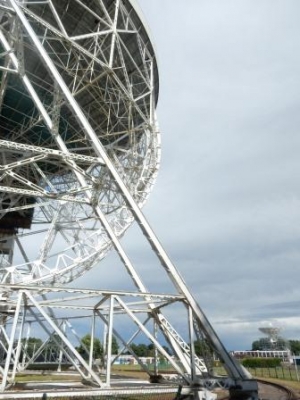
South of Manchester, looming over golden fields and wind-tossed oaks, the superstructure of Jodrell Bank’s Lovell radio telescope dazzled in the July sun. A local landmark, it is visible from motorway and train-line yet always looks out of place in such a resolutely rural part of Cheshire, like a clunking tripod from War of the Worlds. But it is from here that Britain’s scientists turn their faces to the farthest reaches of the cosmos.
Jodrell Bank itself is owned by the University of Manchester, a legacy of that brief moment after the second world war when Manchester was at the cutting edge of technology in a way not seen since the height of the Industrial Revolution saw the city sucking in workers to feed its ever-thrumming textile looms. Alan Turing, a code-breaker during the war, experimented with programmable and stored memory computers at the university. And Bernard Lovell, fresh from his war-time research on radar, persuaded the Botany department to let him set up an experimental radio telescope on its Cheshire site with the idea that sound could reach further into space than mere sight.
Lovell’s dream was to build the Mk I radio telescope, later renamed in his honour. The Mk I is a 250-foot-diameter dish, fully steerable around a central axis, designed to suck in ‘cosmic rays’ and bounce them up to a central receiver suspended above the bowl. Construction began in 1952 and soon ran over budget. It was saved, by all people, by the Soviets. Just as the telescope became operational in the summer of 1957 the USSR launched Sputnik 1, the world’s first artificial satellite. The Mk I was the only device able to track Sputnik’s booster rocket. Funding rushed in. The American Pioneer probes were tracked from Jodrell Bank and the first images of the moon’s surface were intercepted from the Soviet Luna 9 and printed out on a fax machine. Oh, and the site also found some time to indulge in some proper astronomical science too. In fact, over 60 years later and the MK I is still in use – along with other linked radio telescopes at the Jodrell Bank site, across the UK, and further afield. It remains the third largest fully steerable radio telescope in the world.
So in terms of Outstanding Universal Value, I think the UK has hit upon something with a good chance of gaining nomination. Science and engineering from the second half of the 20th century is missing from the List, and the most modern observatory on the list would otherwise be that in Maritime Greenwich.
As a visitor the high-tech science aspect only comes through from the exhibitions on site and guided tours. For something from the cusp of the space age the most notable feature is Jodrell Bank’s resolutely mid-20th century engineering. Lovell pulled in favours from the armed forces: an early telescope was mounted on a searchlight array and the motor systems used to pivot the Mk I telescope were constructed from battleship gun turrets. The Control Building (in the back right of my photo) is the sort of unlovely brick and glass construction you might expect to see at a minor airfield – except for the telescope dish mounted on its roof. But that helps to put it into context, as do the guided tours (in reality little more than a walk-and-talk along a looping path dotted with information board). The tour provided snippets of information like how in winter the on-site staff occasionally have to tilt the telescope dishes to clear them of snow or how the staff constructed their own Faraday cage so they could have a microwave oven on site without it corrupting their readings. Some of these stories should be more fully fleshed out by the new First Light Pavilion which is currently under construction.
Note that the First Light Pavilion is not within the Nominated Property Boundary. Nor is the Planet Pavilion (which houses ticket desk, shop, café and an introduction to astronomy). Exiting through the Planet Pavilion and turning right the Property Boundary seems to begin as you reach the Star Pavilion (which is only open for school trips and pre-booked science experiences). The Space Pavilion – which continues the story with the work of the observatory – is within the Boundary, as is the Control Building and the Lovell Telescope itself. The property then continues through a narrow neck beyond the Control Building to a much larger area which captures a few other telescopes (including the elliptical 1960s Mk II), workshops and dormitories, all the way back to the remains of the first searchlight aerial and the botany huts. This area is not accessible to the public although it backs on to the A535 road at the site’s southern boundary.
Entry is £7.25 per adult, £5.40 for those aged 4-16, over 60 or with student ID. As Solivagant noted, a parking charge of £4 per car will come into effect from 5th September 2018 – a factor which helped us decide to visit beforehand. And without a car you’re unlikely to make it to Jodrell Bank. Their own website recommends that those reliant on public transport make their way to Macclesfield and get a taxi from there (there is a nearer station at Goostrey on the Manchester to Crewe line, but it is served less frequently and still requires a 2.5 mile walk down country lanes to reach the observatory. We visited with a toddler so the hard-core science was of less interest to him than exploring the gardens (left out of the Planet Pavilion and hence not within the site boundary), investigating some of the outdoor experiments (the whispering dishes being a firm favourite) and taking part in some of the supported childrens’ activities in the Space Pavilion like drawing planets.
Jodrell Bank is certainly worth half-a-day if you are in the Cheshire / Manchester area and have your own transport. More interestingly for me, should it be inscribed, it means that my front door will qualify as a ‘Hotspot’ (40 mins to Jodrell Bank, 40 mins to Pontcysyllte Aqueduct, 40 mins to Liverpool, 1 hr to Conwy Castle, 1 hr 30 to Ironbridge Gorge, the Lake District, Saltaire or the Derwent Valley).
World Heritage-iness: 3
My Experience: 1.5
(Visited July 2018)
Solivagant
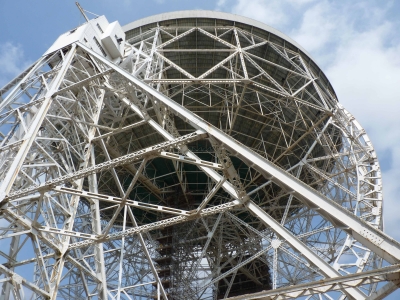
In July 2018 we took the opportunity to make our first ever visit to Jodrell Bank. We had seen it many times in the distance but, whilst we were in the area and with inscription possible/ probable (??) in 2019, it seemed worthwhile seeing fully what it has to offer. As the site is likely to receive heightened interest from WH travellers in the upcoming months the following info might be of interest both to those who are considering whether/when to visit as well as to those who will follow events from afar.
a. We arrived to find frenetic activity ongoing to complete a car park extension. Bad news of course! As from 5 Sept 2018 the, currently free, parking will cost £4 per vehicle in addition to the (as yet!) unchanged entry fees (Trying to visit the observatory by public transport could be an “adventure” - look to reach the village of Goostry, still a 30 min walk away!). Behind the car park, yet more construction was taking place. A new “First Light Pavilion” is going up with completion currently scheduled for late 2019/early 2020.
b. There are already 2 “pavilions” containing exhibitions for visitors to the site - The “Planet Pavilion” and the “Space Pavilion”. At the moment the former doubles as ticket office/cafe but also houses scientific displays whilst the latter showcases the main scientific aspects related to radio astronomy (a third building, the Star Pavilion, is only used for special shows, education etc).
c. It appears that the purpose of the additional “First Light Pavilion” is to present the “heritage” of the site rather than the “science” behind it. It will also become the main entry point/reception etc. It is part of a larger project (“The First Light Project”) to preserve and present the site’s heritage. Gaining UNESCO inscription is presumably either one more aspect of this wider “heritage” objective or (possibly if one were cynical??) the prime objective itself!
d. Most visitors will come just to see the “iconic” giant (89m high and 76m or 250 ft in diameter) Lovell Telescope (photo) – and, amazing it is too in a “clunky” 1950s way (designs were presented in 1950 and construction started as early as 1952). It seems all girders and rivets from an earlier age. Indeed, some parts of it were salvaged from ex WWII battleships being broken up! It, together with the current “Pavilions” and some open air “scientific” exhibits relevant to the technology such as the “Whispering dishes” referred to by Hubert in his review below, constitute the “on view” experience. We managed to fill around 3 hours there, of which quite a lot was spent “playing” with the “experiments” - most of which operate at “child height”! Another interesting aspect of the visit was that the “attendants” in the pavilions were UMIST “students” - though that is perhaps to underplay their knowledge. We spoke to 2 who were researching for Astrophysics PhDs - one from India and another who had a friend currently out in China working on FAST. (As an aside FAST is one of 18 other Radio Telescopes used as "comparators" in the Nomination File - even though it only commenced operation in 2016. Wiki states of it "efforts to develop a tourist industry around the telescope are causing some concern among astronomers worried about nearby mobile telephones acting as sources of RFI. A projected 10 million tourists in 2017 will force officials to decide on the scientific mission versus the economic benefits of tourism"! At Jodrell Bank all visitors are asked to switch off their mobile phones)
e. But the nomination covers rather more. From the main Lovell Telescope area you can see the original brick “Control Building” from the early 1970s (Nominated - but its interior is out of bounds to visitors) which is connected by tunnel to the telescope. Behind its roof can be seen 2 more “dishes” (both nominated) - of which the “Mark II” telescope designed in 1960 is particularly historically significant both for its concrete construction and for its early computer control. Near these lies an area called “The Green” - grassland where Sir Bernard Lovell (1913 - 2012), the founder of the Observatory, first carried out his investigations into “radar waves” from space as early as 1945. He had to move out of Manchester to do this because of radio interference there and UMIST owned a plot of land in leafy Cheshire for use by its Botany department!
f. In addition to the 2 dishes mentioned above, this area contains a series of “huts”, old instruments and the remaining foundations of yet more, together with the living “accommodation” used by scientists in the “early” years. Some consist of underground “archaeological” remains only. It is noteworthy that the Nomination file calls this the site’s “Historic Core”. Its various elements are well described in the Nomination file and I will make no attempt to add further other than to mention that they "glory" in names like "Moon hut" and "Cosmic Noise hut"! Unfortunately none of it is open to the public even for viewing from a distance, and, as far as I have been able to assess, it is not planned ever to make it so. The only comment in the Nomination file is that there is a “plan for guided pre-booked walking tours of this area for a limited number of visitors”. A possible “destination” for some future “Annual Meet-up”??
d. It really is a great shame that one cannot normally see these aspects. I personally was pleased to discover that such remains from the “pioneer” days were to be included in the nomination - it seems to me to raise it from being just a piece of old technology (albeit “iconic”) into a genuine historic site which speaks of its period. Across just a few years you can trace the move from research carried out on a shoestring by a few dedicated “boffins” through to that involving major investments, large teams and world wide coverage. We were told that the Light Pavilion will contain a lot more information about these early locations as well as collections of “moveable” and documentary heritage related to them.
e. The question must arise as to whether the nomination is going to satisfy ICOMOS. One aspect of potential concern could be condition/paucity of the relatively few early remains and another the “authenticity” of the still “in use” dishes etc. Regarding the former - who knows - at least there ARE some remains. Such technology wasn't usually considered worth keeping during the "rush of progress"! Regarding the latter - one must assume that much of the electronics will have been changed many times over in the last 50+ years but I hadn’t realised that even the “skin” of the Lovell Telescope dish which one sees today (if it isn’t parked horizontally!) is a later addition situated a few feet inside the original one. And that even this has been replaced once since it was added. We were also told that the hidden original is being replaced in order to maintain structural integrity because of rust - a section from it is to be erected inside the Light Pavilion. The telescope still carries out research of World level significance and can’t just be “preserved” totally unchanged. The nomination file likens such changes to replacing weathered stones on Durham Cathedral! It will be interesting to see if ICOMOS accepts this. I personally find it a positive that the site is still operating, rather than being a “museum”, even if this means that some original elements have been, and will continue to be, replaced.
f. The Nomination File is available to view here (unfortunately it doesn’t appear to have been set up to allow full download from “issuu”)
g. From the “kids height” experiments to the involvement of UMIST students in staffing the site I was quite impressed with the extent to which the site “majors” on providing engagement, explanation and interpretation – perhaps an aspect which isn’t given enough importance alongside “preservation” when evaluating nominations and management plans. School parties are clearly very important - even if somewhat annoying when, as a “WH traveller” one is trying to listen to the video!! Next to the Car Park the stage was being readied for this year’s “Bluespot Festival” described in the Nomination File as having as an objective to address the dip in visitor profile among “young adults” – “an award-winning festival of discovery at the grounds of a deep space observatory. Set against a backdrop of the iconic Lovell Telescope at Jodrell Bank, bluedot combines a truly stellar line-up of music with a ground-breaking programme of live science experiments, expert talks and immersive artworks”!! (but they were very concerned to convince ICOMOS that nothing would get damaged during such events!!)
h. Finally - I thought it a rather “nice” trivial detail to discover that the location of this iconic site of “modern” technology is named after one “William Jauderell”, an archer who fought with the Black Prince at the Battle of Poitiers in 1356!
Hubert
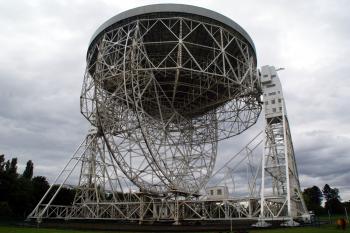
When we planned our trip through Wales and Central England in May and June 2017 we were not aware of the fact that the Jodrell Bank Observatory would be the next UK nomination, aiming for inscription in 2019. In hindsight, it was a good idea when we spontaneously decided to make a detour to the Cheshire East district, a few miles south of Manchester.
Although I have a soft spot for technical and scientific sites, I did not know much about the observatory prior to our visit. Except of the entry on the tentative list, I knew Jodrell Bank only because it is mentioned in the novel "The Hitchhiker's Guide to the Galaxy" by Douglas Adams (the telescope is also shown in the film adaption).
Jodrell Bank is home of the Lovell Telescope, a steerable radio telescope with a diameter of 76 metres. When it was built in 1957, it was the largest of its kind in the world. Today, it is the third largest steerable radio telescope. The Lovell Telescope is the main sight at Jodrell Bank. There is a semicircular path around the telescope, close to the outer rail on which the telescope is moved, so the mechanics of the structure and the supporting towers are well visible. Information panels explain how the telescope works and what it is used for. On our visit the parabolic antenna was aligned towards the zenith, so we could only see the outside of the bowl (photo).
More information on astronomy and the research at Jodrell Bank is provided by the exhibition at the Star Pavilion. The Lovell Telescope was used to track American and Soviet space probes, like the Sputnik 1, the first artificial earth satellite and the first space probes that flew to Mars and Venus. The first gravitational lenses have been discovered there; pulsars, quasars and distant galaxies were investigated, and it was involved in the SETI project (search for extraterrestrial intelligence). Seems to be sufficient reasons to justify OUV. And it is still in use today.
The exhibition is well presented and interesting for both children and adults. There are several interactive exhibits and hands-on experiments. I liked the outdoor exhibits explaining physical principles, e.g. the Whispering Dishes. I suppose that school classes are frequent visitors. There is a glass-walled café with view to the telescope and a souvenir shop in the entrance building, a third pavilion is for events and meetings. So far, there are no guided tours for individual visitors, but maybe this will be offered in the future.
The observatory is located about 30 kilometers south of Manchester and only a few kilometers from the M6, approximately equidistant from the WHS Liverpool, Pontcysyllte and Derwent Valley. We spent about two hours at the site including the exhibition.
The comparison with similar properties in the T-list description on the WHC website is rather sparse and I am not an expert in this field, so I can not assess the significance of the site and whether it is outstanding compared to other radio telescopes. However, it seems that the Jodrell Bank Observatory contributed significantly to astrophysical research and unmanned spaceflight.
In my opinion, it would be a worthy addition to the World Heritage list, it would fill two gaps: scientific sites and modern heritage after 1950.
Community Rating
- : Thomas Harold Watson
- : PabloNorte Dibro Chrysalis_kat Matthewgibbs
- : Solivagant Martina Rúčková Ian Cade Peter Lööv Natashastone Christravelblog
- : Svein Elias Hanming Randi Thomsen MH Hubert Ivan Rucek Fozzak Josh Daws James Bowyer Alexander Lehmann
- : Argo Clyde Allan & Lucia DavidS Nan
- : Els Slots Roger Ourset Stanislaw Warwas Craig Harder Philipp Peterer Daniel C-Hazard Fmannucci Squiffy
Site Info
- Full Name
- Jodrell Bank Observatory
- Unesco ID
- 1594
- Country
- United Kingdom
- Inscribed
- 2019
- Type
- Cultural
- Criteria
-
1 2 4 6
- Categories
- Structure - Science and Education
- Link
- By ID
Site History
2019 Inscribed
Site Links
Unesco Website
Official Website
In the News
Connections
The site has 8 connections
Constructions
History
Individual People
Science and Technology
Timeline
WHS Hotspots
Visitors
87 Community Members have visited.